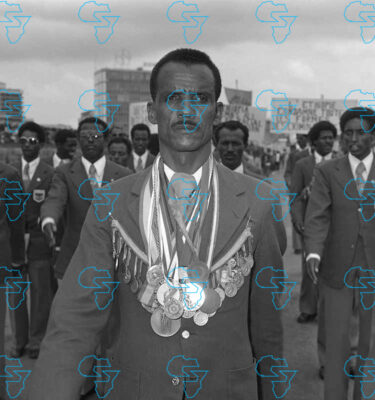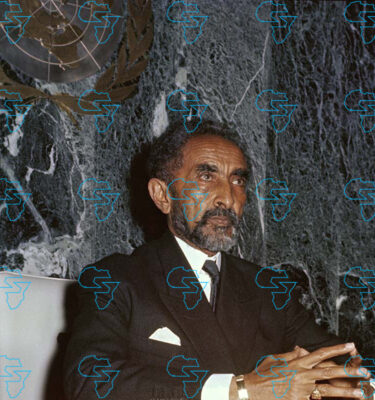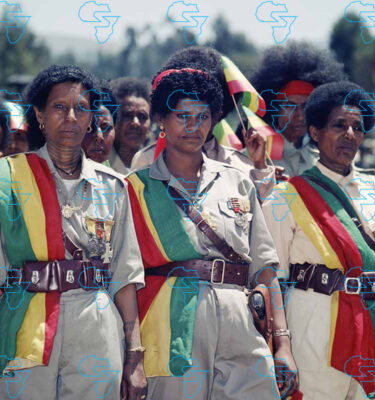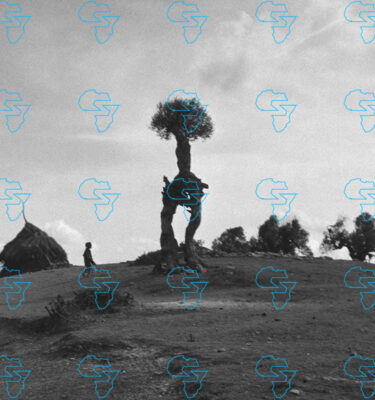
A couple of months ago, in the wake of the inauguration of the Grand Ethiopian Renaissance Dam (GERD), the administration of Prime Minister Abiy Ahmed (PhD) signaled growing interest in developing a nuclear power program in Ethiopia.
In September, the PM was among the attendees at World Atomic Week in Moscow, where Ethiopia and Russia signed a preliminary agreement to partner in building a nuclear power plant.
The two sides have reportedly agreed to create a roadmap for the technical and economic foundation of the project, which would also include the training of professionals to run the planned plant and develop Ethiopia’s nuclear sector, which does not exist at present.
Government officials conceded during a subsequent International Atomic Energy Agency in Geneva, Switzerland, that the ambitious project would take at least a decade to realize but doubled down on their intention to see it through.
From The Reporter Magazine
However, experts in the nuclear science field caution the project is inefficient, ill-timed, and unnecessary.
Gedion Getahun (PhD) is among the very few Ethiopian nuclear scientists around the world. He earned his postgraduate degree in nuclear chemistry and nuclear instrumentation from Loughborough University, UK, and his practical work history includes research on uranium chemistry, nuclear reactors, radioactive waste disposal strategies, and atomic power safety, among other topics.
Gedion is currently a member of the Department of Organic-Nuclear Complex Studies at the University & Technical Academy of Science, based in Mainz, Germany.
From The Reporter Magazine
In Ethiopia, Gedion was part of a team of nuclear scientists, medical doctors, and radio-pharmacists who established the first-ever Department of Nuclear Medicine at Tikur Anbessa, the country’s largest public hospital. He was also a founding member of the Ethiopian Nuclear Science Society, which was established around five years ago.
In an interview with The Reporter’s Ashenafi Endale, Gedion expressed his concerns about the feasibility of Ethiopia’s newfound ambitions for nuclear energy. The expert argues that building the infrastructural and institutional capacity for a project this massive in scope alone can take decades, highlights the gargantuan financial costs involved, and urges the government to focus on Ethiopia’s abundant renewable energy sources instead. EXCERPTS:
The Reporter: What is your take on the latest nuclear energy agreement between Ethiopia and Russia? How do you evaluate Ethiopia’s preparedness for a nuclear power project?
Gedion Getahun (PhD): Ethiopia recently signed an agreement with Russia’s Rosatom to develop a nuclear power program, but faces significant challenges like the lack of funding and technical expertise, and a weak regulatory framework. There are potential risks associated with the lack of a clear funding plan and extensive prior investment, and the lack of necessary infrastructure and personnel.
These are Ethiopia’s problems. Technical and financial details have not been disclosed but the country is preparing to launch six large-scale infrastructure projects worth an estimated 30 billion dollars.
The initiative includes a nuclear power plan, an oil refinery, a national gas facility, an airport expansion program, and the construction of housing over the coming six years. The huge amount of funding needed for these projects represents a quarter or more of Ethiopia’s GDP. The country faces acute foreign exchange shortages and high debt servicing costs. As a result, securing and financing these huge capital-intensive projects simultaneously could prove difficult.
My evaluation of the nuclear power project is that the necessity of nuclear power could be compensated by developing and improving technical standards and raising the generation capacity of the Grand Ethiopian Renaissance Dam [GERD].
Currently, Ethiopia is not ready to build a nuclear power plant owing to several challenges and concerns.
What challenges and concerns do you observe?
Labor, security, maintenance, and fuel, which involves the purchase and manufacture of fuel rods. Waste management, including the long-term storage of spent fuel and plant decommissioning. Security and stability: ongoing regional conflicts raise concerns about the security of a nuclear power facility in Ethiopia.
The country needs to build significant infrastructure and institutional capacity to manage such a complex project—a process that can take decades. Building a nuclear plant requires sophisticated regulatory systems, safety protocols, and a highly skilled workforce, which Ethiopia should start to develop.
The project would also be extremely expensive and considering Ethiopia’s current debt levels and foreign exchange shortages, securing the necessary financing will be difficult. It would also require intensive human capital in the form of educated, high-caliber nuclear engineers and scientists.
In terms of the environment, surrounding areas must be protected from radioactive contamination by minimizing radioactivity and nuclear pollution. Security and risk control of the nuclear plant to avoid accidents and incidents by continuously regulating pumps and pipelines would also be necessary.
The Nuclear Disarmament and Non-Proliferation of Weapons of Mass Destruction agreements must be signed and agreed to. In other words, Ethiopia requires robust legal and regulatory frameworks for safety and non-proliferation concerns. It also needs a stable financing arrangement because nuclear technology requires millions and millions for its continuity. Grid distribution and grid capacity must also be determined.
What are the preconditions a country must fulfill before pursuing nuclear power?
The prerequisites are diverse and include a huge amount of money to establish the nuclear plant and to cover the continuous expenses. These are security, nuclear engineering, waste disposal, environmental protection, human capital, and political and economic stability. This means peace and regional security.
How significant is the agreement with the IAEA and Siemens for a linear accelerator (LINAC) device to provide cancer treatment at Tikur Anbessa Hospital? Can this device improve health services in Ethiopia?
The IAEA has provided medical linear accelerators (LINACs) to Tikur Anbessa Hospital. LINACs are commonly used in radiotherapy treatment globally. They are machines that use electricity to accelerate electrons and produce high-energy X-rays or electron beams, which are then used to destroy cancerous cells while minimizing damage to healthy tissue.
These instruments are highly essential and can be extremely useful for improving health services in Ethiopia. Let’s take this opportunity to discuss what we mean by human capital and why we say qualified human capital is required.
For instance, Tikur Anbessa will need at least three highly qualified experts to run the application of the LINAC. These include an oncologist (cancer specialist), a radiation dosimetrist, and a medical physicist.
If a patient is scheduled for radiation therapy using a LINAC, the radiation oncologist must collaborate with the radiation dosimetrist and a medical physicist to develop a treatment plan. This means that all three of these qualified professionals must double check the plan before treatment begins and implement quality assurance procedures to ensure that each treatment is delivered in the exact same manner. This demonstrates that for one treatment, three qualified personnel are essential.
Can nuclear technology improve the overall healthcare system in Ethiopia?
Adequate medical care, for instance, for cancer patients, everywhere in the country, is insufficient and in some cases completely absent. Therefore accessibility to medical care must be improved. Of course, nuclear diagnostics and radiotherapy can improve the situation but they cannot solve the entire problem. This is only possible by raising the standards of the entire health system through appropriate funding, health politics, government financial support, private funding, and [creating] qualified personnel in the country.
Very few African countries have the privilege to rely on nuclear energy to power their development. Why is this?
First, there are currently 434 nuclear power plants [NPPs] in operation around the globe, and only two are running in southern Africa. Some African countries may possess research reactors for scientific, medical, or engineering purposes. Despite the potential and interest in nuclear power in Sub-Saharan Africa, there remain significant challenges to adopting the technology on the continent. There are preconditions on the design, capacity, operation, and stability of nuclear power. For NPPs to operate in a safe, secure, and technically sound manner, these requirements must be carefully considered. But grid planners and system operators acknowledge the conditions are unsuitable in many African states. Other experts say that large-scale reactors with huge upfront investment requirements are likely to be unsuitable for capital-constrained African countries with small power grids.
Second, there are grid limitations.
According to the IAEA, a power grid should be about ten times the capacity of the nuclear plant to handle its integration, and few African Countries currently meet this requirement. Grid limitations are a significant reason why African countries struggle with nuclear power projects, as many national grids are not large enough to safely absorb the output of a traditional NPP. And in many African countries, proposed settings for nuclear plants are often very far away from big towns and densely populated areas. This means the grid systems required to supply energy will carry transmission costs, because of larger distances between significant population centers.
Third, there are financial constraints. Few African countries can afford nuclear power owing to the need for massive financial investment, limited grid capacity, and a lack of technical expertise and trained personnel. Safety concerns, nuclear waste management, and potential dependency on foreign suppliers are also factors that hinder nuclear power projects.
Fourth, according to the IAEA, there are 19 infrastructure issues, recognized worldwide, which governments must consider if they wish to establish a nuclear power plant. These include safeguards, funding, radioactive waste, and human resource development to mention a few. African countries have not fulfilled these requirements.
Fifth, many Sub-Saharan African countries cannot offer clear institutional and financial frameworks, including a distinct nuclear regulator.
Sixth is political and economic stability, safety concerns, and technical capacity. There are concerns about Africa’s safety culture in relation to nuclear power that have made the deployment of nuclear technology in some places a highly sensitive topic. Notably political instability in certain regions, which makes them susceptible to the threat of nuclear weapon proliferation or sabotage, and the lack of local expertise necessary to run the technological intricacies has brought Sub-Saharan Africa well within the ambit of this sensitivity.
Seventh is international finance institutions (IFIs). IFIs like the World Bank or African Development Bank do not appear to have a strong interest in investing in nuclear power. In fact, most large IFIs have policies against investing in nuclear power projects.
How much of an impact can nuclear power have on energy, health, agriculture, technology and overall development in developing countries?
Nuclear energy alone has never raised the standard of living in the developing world. There is a widespread belief that nuclear technology has the power to raise the standard of living in Africa. Poverty in Africa and elsewhere is complex in nature and depends on several factors. Even in highly industrialized countries, where nuclear power and other sophisticated technology are at home, poverty has grown enormously.
Therefore, Africa must promote democracy and good governance, and exercise economic liberty. It must also improve its agricultural economy and pricing for its mineral resources, and balanced ecological and environmental work programs are essential. Micro- and macroeconomic programs and the education, medical, and scientific sectors must be improved and developed.
Nuclear technology has to be coupled with all of these in order to raise the standard of living.
Is access to nuclear energy a political or purely developmental issue? Is the governance and regulation of nuclear energy fair?
Access to nuclear energy is a political as well as a developmental issue. These issues are intertwined, and difficult to distinguish.
A number of political factors also matter. Among them are government policies, public opinion, finance, technical expertise, geopolitics, concerns about nuclear proliferation, and the treaty on the non-proliferation of nuclear weapons.
Regarding whether the governance of nuclear power is fair, I would say it isn’t. It is a complex question with no single answer, but I believe nuclear power is unbalanced globally.
For instance, industrialized countries or countries with the know-how can exceed uranium enrichment levels required for energy production while other countries are not allowed to enrich their Uranium because it would lead to the atomic bomb situation. We all accept the atomic bomb is dangerous and we should have the democracy to decide together to phase out uranium fission technology.
There are arguments about whether nuclear energy is clean energy or not. What do you have to say about this?
Pollution-free or really a zero-emission energy source? This question applies to environmental or ecological aspects, but the answer is no; nuclear is not pollution free.
Nuclear power is not pollution free although it produces virtually no greenhouse gases like carbon dioxide or methane during operation. Therefore, the technology has significant environmental benefits compared to fossil fuels because of the greenhouse effect. However, nuclear energy carries other pollution related concerns in the form of radioactive rays or radioactivity, which can be extremely dangerous.
In general, pollution can arise from the operation of a nuclear power plant in one of four forms. There are power plant emissions, radioactive waste, uranium mining, and uranium refining.
Uranium mining and refining include the generation of radioactive waste that requires safe long-term disposal.
Is nuclear energy renewable?
The answer is no. Nuclear energy is not a renewable resource because it relies on uranium, a finite and non-replenishing fuel source obtained from the earth. True renewable energies are wind and solar power, not nuclear. Once uranium has undergone fission in a reactor, it is used up as a fuel and cannot be recovered or regenerated in a practical way, classifying it as a non-renewable resource similar to fossil fuels like coal and natural gas.
Could you describe the risks associated with nuclear waste?
Nuclear reactors produce radioactive waste as a byproduct that remains hazardous for thousands of years. Nuclear wastes are classified depending on the amount and concentration and radioactivity measured. The waste is then immobilized in glass and often disposed of in a deep geological repository site, which can be 500-700 meters deep.
Issues related to the transport of uranium from one place to another, as well as the storage and disposal of radioactive waste remain unsolved problems in nuclear technology. In most nuclear-powered countries, like here in Germany, future sites for nuclear waste disposal have not yet been identified despite the country utilizing nuclear power for almost 10 decades. In the European Union, until present, finding appropriate and secure nuclear sites is not possible because of the long half-life of the radioactive material.
The waste is harmful to human health and the environment. It can cause cancer and other serious diseases.
Do you think Ethiopia is capable of managing nuclear waste?
No, Ethiopia is not yet ready to manage nuclear waste disposal. And if accidents or incidents happen, which is the dark side of this technology as they have previously occurred several times, Ethiopia is not qualified to overcome the danger.
Sourcing uranium is another issue that goes past its purpose as a raw material and is often tied to diplomatic leverage and even political influence. Do you think Ethiopia can have consistent access to uranium to pursue its nuclear power projects?
Before we prophesize about Ethiopia’s future uranium technology, let us define the role of any country with excess uranium.
Generally, uranium serves as diplomatic leverage and as a source of political influence. Both have functions and it is obvious that these two roles are often intertwined. Because uranium is crucial for both civilian nuclear power and military application, the element is endowed with significant geopolitical power. Nations can use uranium enrichment to gain leverage during diplomatic negotiations. By threatening to increase the enrichment of their uranium stockpiles, a state can pressure the international community to offer concessions or ease sanctions. In other words, a nation’s control over uranium production or supply can be used to gain concessions in trade disputes or as a leverage against sanctions. For example: Iran has used its enriched uranium stockpile as a bargaining chip in talks with other countries.
As far as military technology is concerned, the ability to produce or deny nuclear weapons is a major factor in international security and uranium is the key component of this.
Through uranium production, Ethiopia will be more attractive to nuclear firms, like other African countries including Niger, Namibia, and South Africa. And like Kazakhstan, Russia, or Niger, major uranium producing countries, sufficient uranium production may enable Ethiopia to use it as a bargaining chip in terms of its economic development and political relationships.
Uranium consistency is a source of national pride and a symbol of scientific and geopolitical strength. This enhances the country’s bargaining position on the world stage and serves as a pillar of its strategic independence.
Overall, for Ethiopia to succeed in its pursuit of mixing nuclear energy into its development plans, what should be the priorities in the short and long term?
Ethiopia is blessed with enormous potential from solar, wind, geothermal and hydropower. These renewables can meet 75 percent of Ethiopia’s electricity demands by 2040 and hopefully 100 percent by 2050.
Currently, nuclear power is an extremely poor choice for Ethiopia. At present there is an overwhelming amount of peer-reviewed evidence from across the globe that widely distributed renewables, managed by smart grids and backed up by various forms of energy storage such as batteries and pumped storage, can meet the energy needs of growing economies like Ethiopia.
Nuclear power is catastrophically expensive to build, leading to higher electricity costs. Building nuclear power plants is a massive multi-billion dollar undertaking with long repayment periods. This makes financing a major hurdle for developing nations like Ethiopia. The global industry shows that some power plants can cost up to 40 billion dollars, and this refers only to construction costs. Supplementary funds are essential for other works and to run the power plant. In most cases, governments have to invest between five and 10 billion dollars, and the history of nuclear power funding shows that vendors push governments to raise taxation to cover these expenses.
The priorities for Ethiopian energy should be the diversification of energy supply sources. Ethiopia should diversify its energy program through non-nuclear methods using solar, wind, geothermal, hydropower, gas and oil.
To conclude, whether Ethiopia can afford to establish a nuclear power plant now or in the near future depends on its ability to overcome immense financial and technical hurdles.
.
.
.
#Nuclear #Scientist #Cautions #Ethiopias #Newfound #Atomic #Ambitions
Source link











